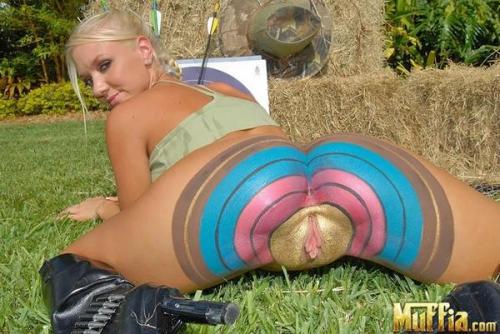I'd call this project a "Von Gets Paid to Draw" job. I say that because in all honesty my livelihood is fundamentally based on the fact that other designers can't draw well, so they pay me to do it instead.

Client provided photograph.
The client needed simple B&W artwork of this Jewish mans head. He had seen my "NBA Portraits" and wanted me to do the same based on the hostage quality photo he provided above.

Non-kosher vectors!
This was the clients own attempt at creating simple B&W artwork based on the photo. Do you understand how that whole livelihood thing I mentioned previously comes into play now?
This is nothing new mind you, it's been the fundamental premise of existence for illustrators going back to prehistoric times perhaps. You know, Grog can't throw spear and slay mammoth so he stays home in the cave and draws what happens on the wall. It's fine, everyone has their lot in life.

Refined drawing.
So now it's my turn to draw off the photo provided. As always I draw out my ideas completely so I know what to expect moving to digital. This prevents any guess work as I build my art in vector form.
This specific style is all about simplification. Looking at the facial forms and baking them down to simple shapes until you capture the correct feeling.

Scanned refined drawing.
I scan in my refined drawing, place it into Illustrator, grey it back and lock it on it's own layer. Here it stays as my precise road map to build upon.

Vector shape building.
I build my vector shapes according to my pre-established drawing.

No guess work building.
Precise vector building comes about by figuring out what you need to build before hand by drawing it all out. This is where I think a lot of designers get lazy and jump on the computer too quickly.

To those with an ear let them hear.
Even though this style plays off photography you have to take creative license and improve on reality to make an illustration better. This dudes right ear looks kind of strange being smaller on one side. So I need to fix that.

Base B&W artwork done.
I perform vector plastic surgery on my art and fix his ear.

Back to the drawing board.
I print out my artwork (note lame vertical streaking because my printer sucks) and using a regular pencil I draw out my shading. I refer back to the source photo to pick out visual cues on how they should be drawn.

Building shading vectors.
I follow the same modus operandi as I used to build my primary base art.

More precision building.
I use snap to point all the time. That said the functionality inside CS4 is kind of hinky and doesn't alway work which is a major pain in the butt at times and bloats my build time. Thank you very little Adobe.

Responding to comments.
OK, for those of you who posted early you were correct his ear still looked hinky so I fixed it. The reason I didn't put grey in his beard is because I thought the client didn't want that. I based the decision on their own attempt shown above which was a poor assumption on my part because they came back and requested it.
I guess that means "Commenters: 2" and "Von: 0" so you guys win.

Final floating head.
Grey added to beard, mouth adjusted so he's smiling more and hinky ear repaired.
I've illustrated well over 200 portraits in this style, using the same methodology for MLB, NBA, and NFL licenses over the past several years but I still enjoy it.
I thank God for my livelihood.





















Tidak ada komentar:
Posting Komentar